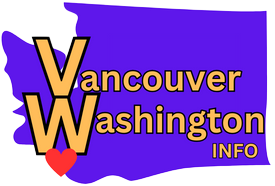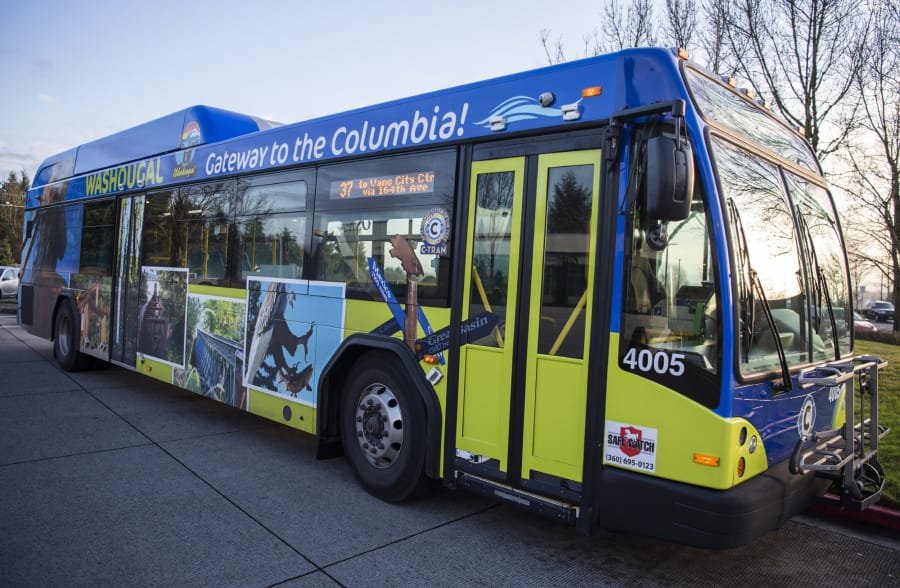
What Are The Public Transportation Options In Vancouver Washington
Table of Contents
TogglePublic Transportation Options In Vancouver Washington
Today, we’re going to talk about the various public transportation options available in Vancouver, Washington. We’ll explore the benefits of using public transportation, including reducing your carbon footprint and saving money on parking. You’ll learn about the local bus service, C-TRAN, and how it can help you navigate the city with ease. We’ll also touch on other transportation options such as ride-sharing services and bike-sharing programs. Stick around to discover the convenient and sustainable ways to get around Vancouver!
Bus Services in Vancouver Washington
Overview of the bus system
If you are a resident or a visitor to Vancouver, Washington, you will be pleased to know that the city offers a comprehensive and efficient bus system to meet your transportation needs. The bus services in Vancouver Washington are operated by Clark County Public Transit, also known as C-Tran. The bus system covers a wide area and connects various neighborhoods, shopping centers, schools, and employment hubs.
Types of bus services available
C-Tran provides different types of bus services to cater to the diverse needs of commuters. The fixed-route bus service is the most common type, with bus routes that run on predetermined schedules and stops. This service is perfect if you have a regular commute or need to travel to specific destinations within the city.
For those who require more flexibility in their travel, C-Tran also offers a limited-stop bus service known as “The Vine.” The Vine runs along the Fourth Plain Boulevard, a major transportation corridor in Vancouver. This service provides faster travel times by stopping at fewer stops along the route.
Popular bus routes
Vancouver’s bus system boasts an extensive network of bus routes, which cover the entire city and its surrounding areas. Some of the most popular bus routes include Route 4, which runs between downtown Vancouver and Clark College, and Route 78, which serves the Vancouver Mall and Salmon Creek Park & Ride. These routes are frequented by students, shoppers, and commuters, ensuring convenient access to key destinations.
Fares and payment methods
In Vancouver, the fares for bus services are affordable and accessible for all riders. The exact fare structure may vary, so it is recommended to check the C-Tran website or consult route schedules for specific information. However, as a general guideline, adult fares typically range from $1.75 to $2.50 per ride, depending on the type of service and distance traveled.
C-Tran offers various fare payment options to make your journey hassle-free. You can pay in cash when boarding the bus, but please note that exact change is required as drivers do not provide change. Alternatively, you can use the C-VAN bus pass, which allows unlimited rides within a specific time period. Additionally, C-Tran also offers the Hop Fastpass, a contactless smartcard that can be loaded with funds for easy fare payment across different transportation modes in the region.
Frequency and reliability of buses
C-Tran buses in Vancouver are known for their regular and reliable service. The frequency of buses depends on the specific route and time of day. During peak hours, buses generally run every 15 to 30 minutes, ensuring you reach your destination in a timely manner. Outside of peak hours, the frequency may be slightly reduced, but there is still a consistent service provided throughout the day.
While delays or disruptions can occur due to unforeseen circumstances, C-Tran strives to maintain their schedules as much as possible and provides real-time bus tracking information through their website and mobile app. This allows you to stay up-to-date with any changes in bus arrival times and plan your journey accordingly.
Light Rail System in Vancouver Washington
Introduction to the light rail system
In addition to the bus services, Vancouver also boasts a modern light rail system known as the Southwest Washington Regional Transportation Authority, or simply “The Connector.” The light rail system offers a convenient and environmentally friendly mode of transportation within the city and is a popular choice for both locals and tourists.
Coverage and route map
The light rail system covers key areas of Vancouver, connecting major neighborhoods, downtown, and important transit hubs. The route primarily runs along the Interstate 5 corridor, providing easy access to Vancouver’s most popular destinations. The light rail system is designed to complement the bus services and act as an alternative mode of transportation, especially for longer distances.
To plan your journey using the light rail system, you can refer to the route map available on The Connector’s website or utilize their mobile app. This will help you determine the closest station to your location and the most suitable route to reach your desired destination.
Stations and accessibility
The Connector light rail system features several well-placed stations throughout Vancouver. Each station is equipped with amenities such as seating, shelter, and signage to ensure a comfortable and convenient experience for passengers. Accessible features, including ramps and elevators, are also provided to accommodate individuals with disabilities.
Some of the notable stations on the light rail system include the Vancouver Mall Transit Center, Fisher’s Landing Transit Center, and Downtown Vancouver Transit Center. These stations serve as major transfer points between different transportation modes and offer easy connections to bus routes, making your journey seamless and efficient.
Operating hours and frequency
The light rail system operates from early morning until late evening, with varying schedules on weekdays, weekends, and holidays. Generally, trains run every 15 to 20 minutes during peak hours, ensuring frequent service for commuters and travelers. Outside of peak hours, the frequency may be adjusted, but the light rail system still offers a reliable option for getting around Vancouver.
Ticketing and prices
When using The Connector light rail system, you will need to purchase a valid ticket before boarding the train. Ticket vending machines are available at each station, allowing you to conveniently purchase single ride or day passes. The cost of tickets may vary depending on the distance traveled and the type of pass purchased.
To ensure a smooth journey, make sure to validate your ticket before boarding the train. Failure to do so may result in fines or penalties. Always remember to keep your ticket with you throughout your journey, as occasional fare inspections are conducted by transit staff.
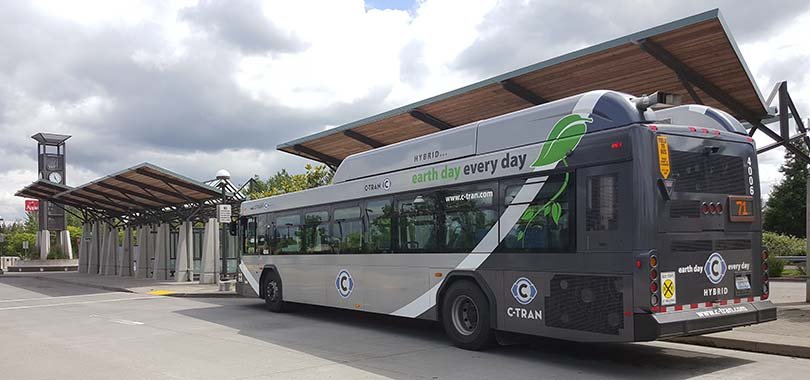
This image is property of clarkgreenneighbors.org.
Commuter Train Services
Information on commuter trains
Alongside the bus and light rail systems, Vancouver offers commuter train services for individuals traveling longer distances in the region. These services are ideal for commuters, providing a comfortable and efficient mode of transportation to reach destinations outside of the city.
Routes and destinations
The commuter train services in Vancouver connect the city with various neighboring towns and cities. Some popular routes include Vancouver to Portland, Vancouver to Longview, and Vancouver to Kalama. These routes cater to individuals commuting for work or leisure purposes, offering a convenient alternative to driving.
Timings and frequency
Commuter trains typically operate during peak commuting hours, with schedules designed to accommodate regular workday travel. Departure and arrival times may vary depending on the specific route and day of the week. It is recommended to check the train schedules in advance to plan your journey accordingly.
Generally, commuter trains are known for their punctuality. They provide a reliable option for individuals who prefer a stress-free and time-saving mode of transportation, without the hassle of traffic congestion.
Ticketing options
When using the commuter train services, you will need to purchase a valid ticket before boarding the train. Ticket options may include single ride tickets, monthly passes, and discounted fares for frequent commuters. It is advisable to purchase your ticket in advance to avoid any last-minute rush or inconvenience.
Commuter train tickets can be obtained at the ticket vending machines located at the train stations or through online platforms. It is important to have your ticket readily available during your journey, as train staff may conduct periodic ticket checks to ensure compliance.
Facilities provided
Commuter trains in Vancouver are equipped with comfortable seating, ample legroom, and amenities such as restrooms and designated areas for storing luggage. Wi-Fi connectivity may also be available on some trains, allowing you to stay connected while commuting.
Additionally, these trains prioritize the safety and wellbeing of passengers, with measures in place to ensure a secure and pleasant journey. Trained staff members are ready to assist and provide information whenever needed.
Ferry Services
Overview of ferry services
While Vancouver is primarily known for its land-based public transportation systems, it also offers ferry services for those looking to explore the nearby islands and waterways. These ferry services provide picturesque and relaxing travel experiences, allowing you to enjoy the natural beauty of the region.
Routes and terminals
Vancouver’s ferry services primarily operate on the Columbia River and provide access to various islands and ports of interest. Some popular routes include trips to the historic port town of Astoria, Oregon or to the beautiful Sauvie Island. These routes are perfect for leisurely day trips or weekend getaways.
Ferry terminals are conveniently located along the river and offer facilities such as parking, waiting areas, and restrooms. It is important to check the ferry schedules in advance, as they may operate on limited days or specific seasons.
Operating hours and frequency
The operating hours and frequency of ferry services vary depending on the specific route and time of year. Generally, ferries run during daylight hours and offer a limited number of trips per day. It is advisable to plan your journey accordingly and arrive at the ferry terminal a bit early to secure your spot, especially during busy holiday periods.
Ticketing and fares
To board the ferry, you will need to purchase a valid ticket. Ferry fares typically vary based on factors such as the destination, type of ticket (round trip or one-way), and passenger age. Tickets can be purchased at the ferry terminals or through online platforms, depending on the availability of services.
It is important to note that some ferry services may not accept cash for ticket payment, so it is recommended to check the payment options before your trip. Additionally, make sure to retain your ticket throughout the journey, as occasional ticket checks may occur during the crossing.
Amenities on board
Ferry services provide a delightful travel experience, with various amenities available on board to enhance your journey. Comfortable seating options, both indoor and outdoor, allow you to relax while enjoying the scenic views. Some ferries may also offer onboard food and beverage services, allowing you to indulge in snacks or light meals during the crossing.
Additionally, ferry staff are trained to assist passengers and provide necessary information, making your journey safe and enjoyable. Whether you are traveling alone, with friends, or with family, ferry services in Vancouver offer an excellent opportunity to explore the region’s natural beauty from a unique vantage point.
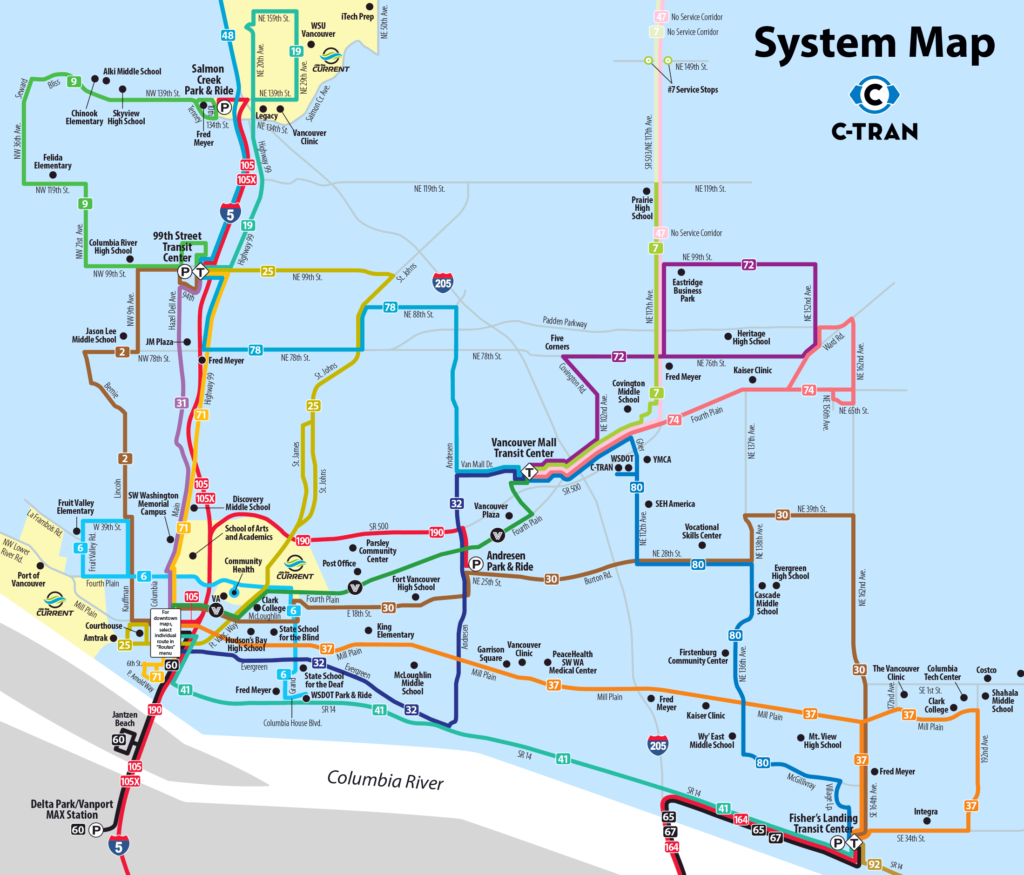
This image is property of getthereswwashington.org.
Ridesharing and Carpooling Options
Explanation of ridesharing services
In addition to the public transportation options, Vancouver also offers ridesharing services as an alternative way to get around the city. Ridesharing involves using mobile applications to connect passengers with private drivers who provide transportation services for a fee.
With ridesharing, you can book a ride through a smartphone app, and a nearby driver will pick you up and take you to your desired destination. Ridesharing services have gained popularity for their convenience, flexibility, and often cost-effective pricing.
Popular ridesharing platforms
Various ridesharing platforms operate in Vancouver, allowing you to choose the service that best suits your needs. Some popular ridesharing platforms available in the city include Uber and Lyft. These platforms provide seamless booking experiences, allowing you to track your driver’s arrival, estimate the fare, and pay through the app.
To use ridesharing services, simply download the respective app onto your smartphone, create an account, and input your pick-up and drop-off locations. The app will connect you with available drivers in your area and provide you with estimated arrival times.
Benefits and drawbacks of ridesharing
Ridesharing offers several benefits to passengers, including door-to-door service, 24/7 availability, and the option to choose from various vehicle types. Ridesharing can be particularly useful when traveling with luggage or in groups or when you require a more private and comfortable transportation option.
However, it is important to note that ridesharing services are subject to surge pricing during peak times or high-demand periods. This means that fares may increase significantly when the demand for rides exceeds the number of available drivers. It is advisable to check the fare estimates provided by the app before confirming your ride to ensure it aligns with your budget.
Carpooling options and resources
For individuals looking to share rides and minimize transportation costs, carpooling provides an excellent solution. Carpooling involves sharing a private vehicle with other individuals who are traveling in the same direction or to similar destinations.
Several resources and platforms facilitate carpooling in Vancouver, allowing you to connect with potential carpool partners. Websites and apps such as CarpoolWorld, RideshareOnline, or even community-specific Facebook groups provide platforms for carpooling arrangements. Carpooling not only mitigates traffic congestion but also reduces the environmental impact of multiple vehicles on the road.
When carpooling, it is important to establish communication and trust among the carpool participants. Establishing ground rules regarding pick-up locations, drop-off times, and cost-sharing can contribute to a harmonious and efficient carpooling arrangement.
Tips for efficient carpooling
To ensure a successful carpooling experience, consider the following tips:
- Establish a regular schedule: Agree on set pick-up and drop-off times to ensure consistency and punctuality.
- Determine fair cost-sharing: Discuss how costs, such as fuel and parking, will be shared among carpool participants. This will help distribute the expenses fairly.
- Flexibility and consideration: Be understanding and accommodating of each other’s needs and schedules. It is important to maintain open communication and be respectful of any changes or adjustments.
- Safety first: Adhere to traffic rules and regulations and ensure the vehicle is properly maintained and roadworthy. Plan the carpooling route to optimize efficiency and minimize detours.
- Establish contingency plans: In the event of unforeseen circumstances or emergencies, it is prudent to have alternative arrangements in place to ensure participants can still reach their destinations.
Carpooling not only reduces transportation costs but also fosters social connections and promotes a sense of community among participants.
Taxi and Ride-Hail Services
Overview of taxi services
For individuals who prefer the convenience and door-to-door service of a traditional taxi, Vancouver offers various taxi companies that operate throughout the city. Taxis are readily available at designated taxi stands, hotels, or can be booked through phone calls or mobile apps.
Taxi services provide a reliable and efficient mode of transportation, particularly for short-distance trips or for those who require direct transportation without any stops. Taxis are also beneficial when traveling with heavy luggage or in need of a larger vehicle to accommodate more passengers.
Popular ride-hail apps available
In addition to traditional taxis, popular ride-hail apps such as Uber and Lyft are available in Vancouver. These mobile applications offer a convenient way to book transportation from the comfort of your smartphone. Ride-hail services connect passengers with nearby drivers who provide transportation services at competitive rates.
To use ride-hail apps, simply download the respective app onto your smartphone, create an account, and input your pick-up and drop-off locations. The app will match you with available drivers in your vicinity, providing you with vehicle options, estimated arrival times, and fare estimates.
Pricing and fare structure
Both traditional taxis and ride-hail services in Vancouver typically charge fares based on factors such as distance traveled, time spent in the vehicle, and additional surcharges during peak hours. Fare estimates are usually provided by the apps, allowing passengers to have an idea of the expected costs before confirming the ride.
It is important to note that taxi fares are regulated by local authorities, ensuring fair pricing and consistent service quality. Ride-hail services may operate under a surge pricing model during times of high demand, resulting in increased fares. It is advisable to confirm the fare estimate and review the applicable pricing structure before confirming your ride.
Availability and accessibility
Taxis and ride-hail services in Vancouver are readily available throughout the city, providing convenient transportation options at all times. Many taxi companies operate 24/7, ensuring that you can easily find a ride whenever needed. Ride-hail services also offer similar availability, with drivers operating around the clock to serve your transportation needs.
Both taxis and ride-hail services prioritize accessibility, with many vehicles equipped to accommodate individuals with physical disabilities. Additionally, both options can be hailed or requested via mobile apps, making it easy to find a ride from the comfort of your location.
Safety measures and ratings
Both traditional taxis and ride-hail services prioritize passenger safety. Licensed taxi drivers undergo extensive background checks and are regulated by local transportation authorities, offering peace of mind to passengers. Ride-hail services also implement safety standards, requiring drivers to undergo background checks and vehicle inspections.
Moreover, both traditional taxis and ride-hail services provide rating systems that allow passengers to provide feedback on their experiences. This feedback system helps maintain service quality and ensures accountability for drivers and transportation companies.
It is important to remember basic safety precautions when utilizing taxi or ride-hail services, such as verifying the driver’s identification, ensuring the vehicle matches the one specified in the app, and always fastening your seatbelt.
Accessibility Services for People with Disabilities
Specialized transportation options
Vancouver is committed to providing accessible transportation options for individuals with disabilities. For those requiring specialized transportation services, C-VAN is available. C-VAN is a paratransit service operated by C-Tran that accommodates individuals who are unable to use the fixed-route bus system due to mobility limitations.
To utilize C-VAN services, individuals need to apply and qualify for the program. Once approved, passengers can schedule their trips in advance, and C-VAN vehicles will provide pick-up and drop-off services directly to their desired destinations. C-VAN ensures equitable transportation options for people with disabilities, enhancing their mobility and independence within the city.
Accessibility features in public transportation
Public transportation in Vancouver offers various accessibility features to cater to individuals with disabilities. Buses are equipped with ramps or lifts to accommodate wheelchair users, and priority seating is available for individuals with mobility challenges.
Light rail stations and commuter train services also provide accessibility features, such as elevators for easy access between different levels, tactile markers for visually impaired passengers, and audible announcements to assist individuals with hearing impairments.
Moreover, taxi and ride-hail services are required to adhere to accessibility regulations, providing accessible vehicles that can accommodate individuals with different mobility needs.
Organizations and resources for disabled individuals
Vancouver is home to several organizations and resources that support disabled individuals and provide assistance with transportation. The Disability Rights Washington is one such organization that advocates for the rights and needs of disabled individuals in Washington State. They provide valuable information and resources on transportation access and other disability-related matters.
Senior and Disability Services is another organization that offers transportation assistance for eligible seniors and disabled individuals in the Vancouver area. They provide door-to-door transportation services to medical appointments, grocery shopping, and social activities.
For more specific information and guidance tailored to individual needs, it is advisable to contact these organizations directly or explore their online resources.
Support for visually impaired passengers
Vancouver’s public transportation system aims to provide support for visually impaired passengers. Light rail and bus announcements include both audible and visual information, ensuring that passengers with visual impairments are aware of upcoming stops and route changes.
In addition, Vancouver offers tactile markers and Braille signage at light rail stations and bus stops, making it easier for visually impaired individuals to navigate the transportation system. Assistance animals, such as guide dogs or service animals, are also allowed on all modes of public transportation, providing additional support for visually impaired passengers.
This image is property of nextcity.org.
Travel Tips and Guides
Planning your journey
When using public transportation in Vancouver, it is always helpful to plan your journey in advance. Research the bus routes, light rail system, or train schedules to determine the most suitable options for reaching your destination. Check for any service disruptions or closures that may affect your journey and plan accordingly.
Understanding schedules and timings
Familiarize yourself with the schedules and timings of different transportation options available in Vancouver. Buses and light rail systems usually adhere to predetermined schedules, while commuter trains operate during peak commuting hours. By understanding the timing of services, you can effectively plan your travel and minimize delays.
Navigating through different transport options
Take advantage of the various public transportation options in Vancouver and consider the most efficient way to reach your destination. Understand the connections between bus routes, light rail stations, and commuter train services to create a seamless travel experience. For longer distances, consider utilizing commuter trains, while shorter trips within the city center can be easily accomplished by bus or light rail.
Choosing the most suitable mode of travel
When selecting a mode of transportation, consider factors such as distance, time constraints, and personal preferences. Buses are suitable for short to medium distances, offering stops at various locations. Light rail and commuter trains are better suited for longer distances or when time is a critical factor. Additionally, ridesharing, taxis, or carpooling can provide the convenience of door-to-door service.
Tips for saving money on transportation
To save money on transportation, consider purchasing multi-day passes, monthly passes, or other discounted fares offered by C-Tran. Additionally, ridesharing and carpooling options can help to split transportation costs among multiple travelers. If using taxis or ride-hail services, compare fares between different providers or consider traveling during off-peak hours to take advantage of potentially lower rates.
Conclusion
Vancouver, Washington, offers a wide array of public transportation options to meet the diverse needs of its residents and visitors. Whether you prefer the convenience and flexibility of buses, the efficiency and coverage of light rail systems, or the comfort and speed of commuter trains, the city has you covered. Additionally, supplementary transportation options such as ferries, bike sharing programs, ridesharing and carpooling, as well as taxi and ride-hail services, provide further choices for your journeys. With an emphasis on accessibility and the inclusion of individuals with disabilities, Vancouver ensures that everyone can enjoy the benefits of public transportation. So, next time you find yourself in Vancouver, leave your car behind and explore the city using its fantastic public transportation network.
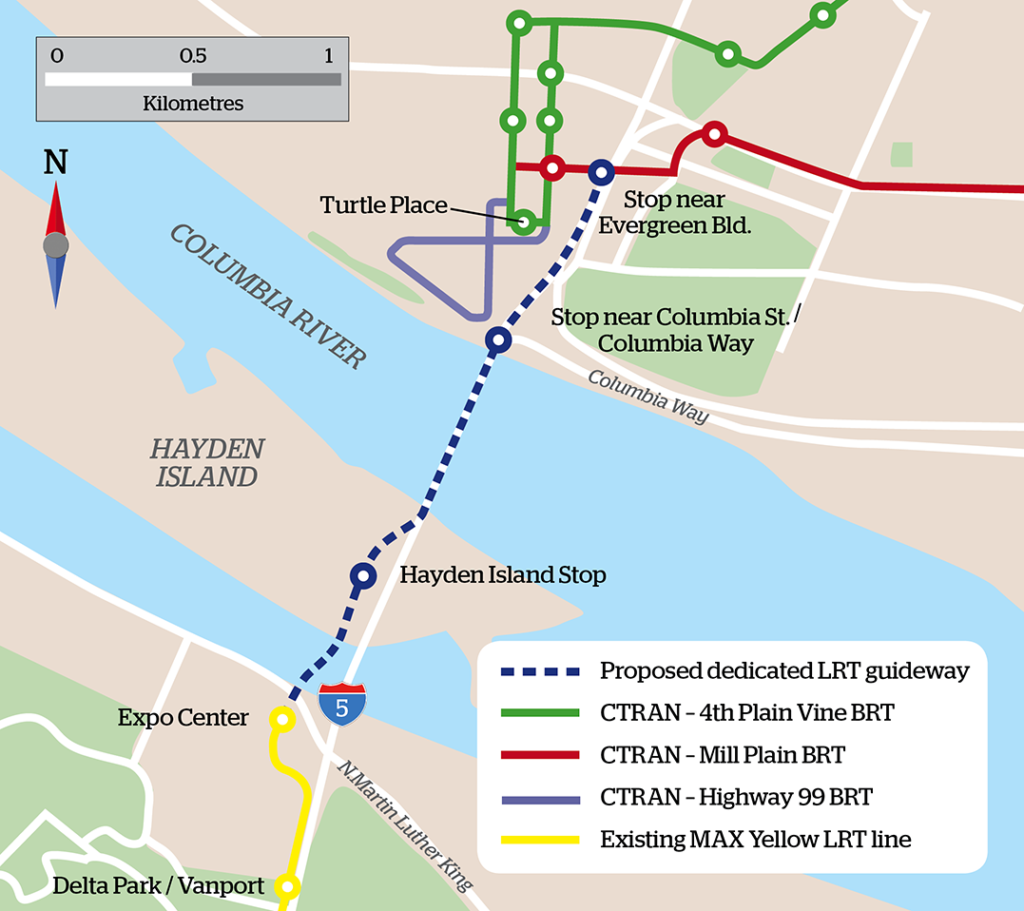
This image is property of www.tautonline.com.
You May Also Like

All About FISHER’S LANDING | 9 Things to Know!
15 August 2023
Cedar Creek Grist Mill
15 October 2023
